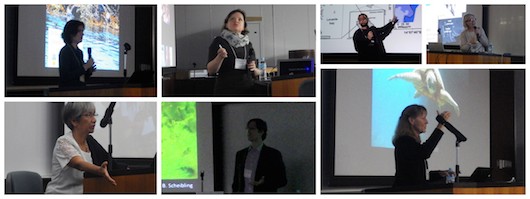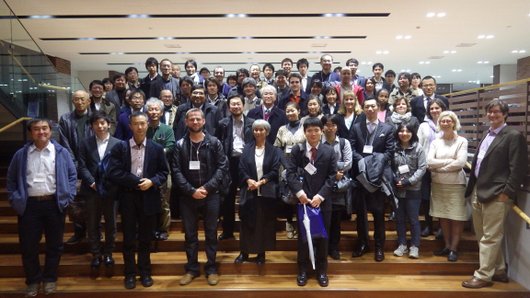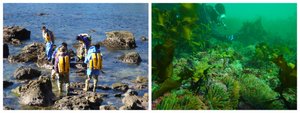2nd JAMBIO International Symposium
The 2nd JAMBIO International Symposium was held on December 4-5, 2014, at University of Tsukuba, Tokyo Campus.

The topic of the symposium was ‘Aquatic Ecosystems: Past, Present and Future’. Seventy five participants from worldwide came to listen to the presentations and joined the lively discussion surrounding them. Six foreign speakers invited from the USA, Canada, UK, and the Phillipines, and 9 speakers from Japan presented data from their recent research on marine organisms.
▶2nd JAMBIO International Symposium Poster(PDF) ▶Program(PDF)
The symposium was divided into five sessions. The first session “Frontiers ecosystem” presented research on past burrowing organisms, marine parasites and extreme environment such as high sulfide and deep sea ecosystems. The second session introduced recent research on the important topics of ocean acidification and showed the different approaches: field based studies using natural CO2 seeps, experimental studies and paleontological studies. The third session, “Marine Primary Producers”, focused the importance of marine primary producers, macroalgae in the coastal ecosystem and phytoplankton in the open ocean, and their fate regarding climate change. The symposium was co-organized with the Tropical Biosphere research Center of the University of the Ryukyus. Therefore, research on corals was well represented with two presentations on corals’ disease in the world and in Japan in the fourth session, “Disturbances in Marine Ecosystems”. In that same session a global view of the effects of climate change on marine biodiversity was given and lead to an active discussion. Finally, during the last session, “Climate and Marine Ecosystem”, a new climatic model that promise a better prediction of local climatic events and will help in the management of marine ecosystem was presented along with the “social approach” that is used in the Philippine for the conservation and restoration of the mangroves.


A banquet was held on the evening of the 4th at the YR Event Hall in Ikebukuro, and participants engaged in lively discussions extending the day presentations. Possibilities of future research collaborations were also discussed and we hope that this symposium will trigger exciting international research.

After the symposium, some participants, including those from abroad, visited the Shimoda Marine Research Center, University of Tsukuba, the Akkeshi Marine Station, Hokkaido University and the Tropical Biosphere research Center of the University of the Ryukyus. They had a tour of the facilities, guided introduction to the local ecosystems through sampling in the inter-tidal zones and diving.
